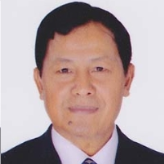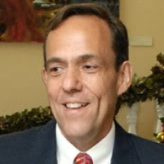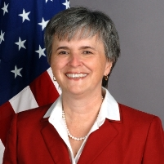Cambodia
Lay of the Land: Cambodia covers most of the lower Mekong River basin in the southwestern portion of Southeast Asia’s Indochinese Peninsula. Most of the country is flat; half is covered with tropical hardwood forest. The monsoonal variation in rainfall has created a geographic oddity–the large central lake, branching off from the Mekong, called Tonle Sap. During the dry season, December to May, Tonle Sap flows into the Mekong River toward the sea. However, during the rainy season the raging Mekong reverses the flow, filling Tonle Sap to several times its dry season size.
Between 1955 and 1963, the United States provided $409.6 million in economic grant aid and $83.7 million in military assistance to Cambodia. Relations between the two countries deteriorated in the early 1960s. Diplomatic relations were broken by Cambodia in May 1965, but were reestablished on July 2, 1969.
With the lifting of a congressional ban in 2007 to provide direct assistance to the Cambodian government, more direct technical assistance has become feasible. In recent years, some American lawmakers have argued that US support for Cambodian development, bilateral trade and the Khmer Rouge tribunal should remain restricted until Prime Minister Hun Sen and the Cambodian government allow more political freedoms and civil liberties. Other policy experts argue that greater US assistance and involvement in Cambodia, through not only foreign aid but also enhanced trade, diplomacy, and educational and cultural exchange, may help to achieve US goals. Furthermore, some assert that greater US engagement with the kingdom may help to counter economic and political influence from China.
The United States is the largest overseas market for Cambodian products, accounting for 63% of total export revenue in 2006. More than 97% of US imports from Cambodia are textiles and apparel. In 2006, US imports of Cambodian apparel increased by 25% over 2005. Overall, the US is running a considerable trade deficit with Cambodia, importing $2.4 billion worth of goods in 2007, while exporting only $139 million. That export total represented an increase from $74.5 million in 2006. The top American exports to Cambodia are road vehicles, machinery and textile fibers. Cambodia has pressed the US government to grant trade preferences on garment exports similar to those enjoyed by some African and Latin American nations.
Overall, the Cambodian government has a poor human rights record, according to the State Department. US officials state, “Security forces committed extrajudicial killings and acted with impunity. There was little political will to address the failure by government authorities to adhere to the rule of law. Detainees were abused, often to extract confessions, and prison conditions were harsh. Human rights monitors reported arbitrary arrests and prolonged pretrial detention, underscoring a weak judiciary and denial of the right to a fair trial. Land disputes and forced evictions, often accompanied by violence, were a continuing problem.
Donald R. Heath
Appointment: Jun 29, 1950
Presentation of Credentials: Jul 11, 1950
Termination of Mission: Oct 2, 1954
Robert McClintock
Appointment: Aug 18, 1954
Presentation of Credentials: Oct 2, 1954
Termination of Mission: Left post, Oct 15, 1956
Carl W. Strom
Appointment: Oct 11, 1956
Presentation of Credentials: Dec 7, 1956
Termination of Mission: Left post, Mar 8, 1959
William C. Trimble
Appointment: Feb 16, 1959
Presentation of Credentials: Apr 23, 1959
Termination of Mission: Left post, Jun 8, 1962
Philip D. Sprouse
Appointment: Jun 28, 1962
Presentation of Credentials: Aug 20, 1962
Termination of Mission: Left post, Mar 3, 1964
Randolph A. Kidder
Appointment: Jul 9, 1964
Note: Took oath of office and proceeded to post, but did not present credentials; left post, Sep 18, 1964.
Note: Alf E. Bergesen was serving as Chargé d'Affaires ad interim when Cambodia severed diplomatic relations with the US, May 3, 1965. Embassy Phnom Penh was reestablished Aug 16, 1969, with Lloyd M. Rives as Chargé d'Affaires ad interim.
Emory C. Swank
Appointment: Sep 3, 1970
Presentation of Credentials: Sep 15, 1970
Termination of Mission: Left post, Sep 5, 1973
John Gunther Dean
Appointment: Mar 14, 1974
Presentation of Credentials: Apr 3, 1974
Termination of Mission: Left post Apr 12, 1975
Note: Embassy Phnom Penh was closed on Apr 12, 1975, following the evacuation of all US personnel. The US Mission to Cambodia was established Nov 11, 1991, with Charles H. Twining as US Representative.
Charles H. Twining
Appointment: May 13, 1994
Presentation of Credentials: May 17, 1994
Termination of Mission: Left post, Nov 20, 1995
Kenneth M. Quinn
Appointment: Dec 12, 1995
Presentation of Credentials: Mar 28, 1996
Termination of Mission: Left post Jul 25, 1999
Appointment: Jun 7, 1999
Presentation of Credentials: Aug 31, 1999
Termination of Mission: Left post May 16, 2002
Appointment: Nov 15, 2002
Presentation of Credentials: Jan 4, 2003
Termination of Mission: Left post, Jul 11, 2005
Appointment: Jun 27, 2005
Presentation of Credentials: Sep 22, 2005
Termination of Mission: Aug 25, 2008
 Hem, Heng
Hem, Heng
Cambodia’s ambassador to the United States is Heng Hem, a diplomat with more than 30 years of experience working in foreign affairs.
- Table of Contents
- News
- Overview
- Basic Information
- History
- Newspapers
- History of U.S. Relations with Cambodia
- Current U.S. Relations with Cambodia
- Where Does the Money Flow
- Controversies
- Human Rights
- Debate
- Past Ambassadors
- Ambassador to the U.S.
- Embassy Web Site in the U.S.
- Comments
- Leave a comment
U.S. Ambassador to Cambodia

President Obama nominated career diplomat William E. Todd as the next ambassador to Cambodia on December 1, 2011, and the Senate confirmed him on March 29, 2012.
Previous U.S. Ambassador to Cambodia

Lay of the Land: Cambodia covers most of the lower Mekong River basin in the southwestern portion of Southeast Asia’s Indochinese Peninsula. Most of the country is flat; half is covered with tropical hardwood forest. The monsoonal variation in rainfall has created a geographic oddity–the large central lake, branching off from the Mekong, called Tonle Sap. During the dry season, December to May, Tonle Sap flows into the Mekong River toward the sea. However, during the rainy season the raging Mekong reverses the flow, filling Tonle Sap to several times its dry season size.
Between 1955 and 1963, the United States provided $409.6 million in economic grant aid and $83.7 million in military assistance to Cambodia. Relations between the two countries deteriorated in the early 1960s. Diplomatic relations were broken by Cambodia in May 1965, but were reestablished on July 2, 1969.
With the lifting of a congressional ban in 2007 to provide direct assistance to the Cambodian government, more direct technical assistance has become feasible. In recent years, some American lawmakers have argued that US support for Cambodian development, bilateral trade and the Khmer Rouge tribunal should remain restricted until Prime Minister Hun Sen and the Cambodian government allow more political freedoms and civil liberties. Other policy experts argue that greater US assistance and involvement in Cambodia, through not only foreign aid but also enhanced trade, diplomacy, and educational and cultural exchange, may help to achieve US goals. Furthermore, some assert that greater US engagement with the kingdom may help to counter economic and political influence from China.
The United States is the largest overseas market for Cambodian products, accounting for 63% of total export revenue in 2006. More than 97% of US imports from Cambodia are textiles and apparel. In 2006, US imports of Cambodian apparel increased by 25% over 2005. Overall, the US is running a considerable trade deficit with Cambodia, importing $2.4 billion worth of goods in 2007, while exporting only $139 million. That export total represented an increase from $74.5 million in 2006. The top American exports to Cambodia are road vehicles, machinery and textile fibers. Cambodia has pressed the US government to grant trade preferences on garment exports similar to those enjoyed by some African and Latin American nations.
Overall, the Cambodian government has a poor human rights record, according to the State Department. US officials state, “Security forces committed extrajudicial killings and acted with impunity. There was little political will to address the failure by government authorities to adhere to the rule of law. Detainees were abused, often to extract confessions, and prison conditions were harsh. Human rights monitors reported arbitrary arrests and prolonged pretrial detention, underscoring a weak judiciary and denial of the right to a fair trial. Land disputes and forced evictions, often accompanied by violence, were a continuing problem.
Donald R. Heath
Appointment: Jun 29, 1950
Presentation of Credentials: Jul 11, 1950
Termination of Mission: Oct 2, 1954
Robert McClintock
Appointment: Aug 18, 1954
Presentation of Credentials: Oct 2, 1954
Termination of Mission: Left post, Oct 15, 1956
Carl W. Strom
Appointment: Oct 11, 1956
Presentation of Credentials: Dec 7, 1956
Termination of Mission: Left post, Mar 8, 1959
William C. Trimble
Appointment: Feb 16, 1959
Presentation of Credentials: Apr 23, 1959
Termination of Mission: Left post, Jun 8, 1962
Philip D. Sprouse
Appointment: Jun 28, 1962
Presentation of Credentials: Aug 20, 1962
Termination of Mission: Left post, Mar 3, 1964
Randolph A. Kidder
Appointment: Jul 9, 1964
Note: Took oath of office and proceeded to post, but did not present credentials; left post, Sep 18, 1964.
Note: Alf E. Bergesen was serving as Chargé d'Affaires ad interim when Cambodia severed diplomatic relations with the US, May 3, 1965. Embassy Phnom Penh was reestablished Aug 16, 1969, with Lloyd M. Rives as Chargé d'Affaires ad interim.
Emory C. Swank
Appointment: Sep 3, 1970
Presentation of Credentials: Sep 15, 1970
Termination of Mission: Left post, Sep 5, 1973
John Gunther Dean
Appointment: Mar 14, 1974
Presentation of Credentials: Apr 3, 1974
Termination of Mission: Left post Apr 12, 1975
Note: Embassy Phnom Penh was closed on Apr 12, 1975, following the evacuation of all US personnel. The US Mission to Cambodia was established Nov 11, 1991, with Charles H. Twining as US Representative.
Charles H. Twining
Appointment: May 13, 1994
Presentation of Credentials: May 17, 1994
Termination of Mission: Left post, Nov 20, 1995
Kenneth M. Quinn
Appointment: Dec 12, 1995
Presentation of Credentials: Mar 28, 1996
Termination of Mission: Left post Jul 25, 1999
Appointment: Jun 7, 1999
Presentation of Credentials: Aug 31, 1999
Termination of Mission: Left post May 16, 2002
Appointment: Nov 15, 2002
Presentation of Credentials: Jan 4, 2003
Termination of Mission: Left post, Jul 11, 2005
Appointment: Jun 27, 2005
Presentation of Credentials: Sep 22, 2005
Termination of Mission: Aug 25, 2008
 Hem, Heng
Hem, Heng
Cambodia’s ambassador to the United States is Heng Hem, a diplomat with more than 30 years of experience working in foreign affairs.
Comments
U.S. Ambassador to Cambodia

President Obama nominated career diplomat William E. Todd as the next ambassador to Cambodia on December 1, 2011, and the Senate confirmed him on March 29, 2012.
Previous U.S. Ambassador to Cambodia








Comments